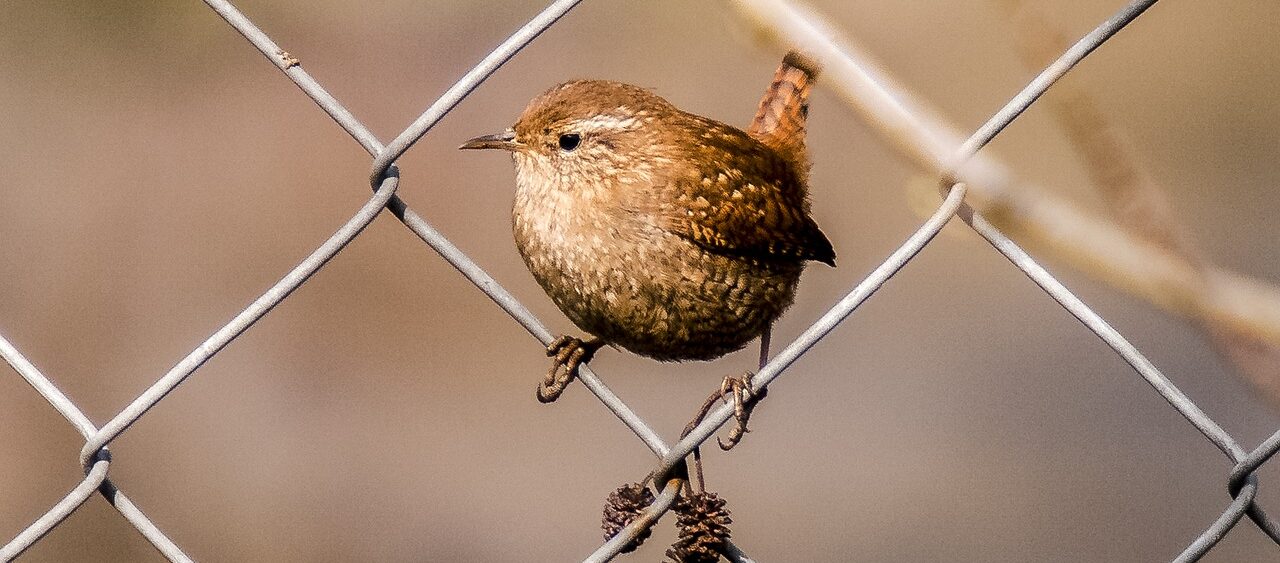Hi, Roseriver here. Today I am going to tell a story about a little tiny bird that did me a huge favour and changed the way I imagined how to photograph wild birds. It was long ago but still reflects upon me. Some friends ask me why I do not do more bird photography and there is no easy explanation.
The time needed can wreck a relationship or put you in a different level of involvement and I probably did not want it. The wren is probably to blame.
Wren Story – Discovery
A few years ago, while on my father’s farm I was walking around when I heard a particular noise that I knew well, wings flapping, but this was different, somehow. This particular noise determined that it was a bird of small dimensions and because of that it took me some time to locate the little one, a wren, this one, I find out later, a winter wren. It was a beautiful little bird, brownish in colour and with a particular tail, upright, and never stopping. Never.
I followed it for about 10 minutes and it was hard to keep up although sometimes it would be at arm’s length, just there, nervous, moving, eating, escaping, looking around like something would come out from behind a branch or a leaf.
The wren would not mind being close to me and that gave me the idea to photograph it. I had no telephoto lenses so it would be perfect. Right?
First Tactic – The Chase
The next day I woke up really early, grabbed my camera, at the time it was a Minolta X300, film camera, what else? And went out looking for the little wren. For hours I walked around the property and outside of it looking for that tiny little bird and nothing.
I shot some other, more common birds, a few sparrows, a crow… from a distance, couldn’t get very close, a crested lark, a blue tit, but nothing of the wren. All the other birds were vulgar but the wren was the first sight so it caught my imagination and desire to have an image by me of the winter wren.
In the afternoon I knew I had to change something so I went back to the place I saw it and observed the bushes around and suddenly there it was, that particular wing flapping, fast and short. Took me a minute to see it and then the chase began.
A little reminder that in those days, the film was expensive and also developed and print. Just to explain that the camera shutter only worked when it was absolutely certain to obtain the image, that one.
The wren had a feeding pattern, I realised that when it made me follow it for the second time through the same bushes and small trees. On the third time, I knew some of the branches she preferred and so I tried to take the picture there but I only had a few seconds and focus, frame… and it was gone.
The wren eventually went away, probably laughing, and I sat in the farmhouse balcony looking at the sunset and totally frustrated with that day. I was a teenager and so my patience is not strongly developed but my stubbornness is.
Second Tactic – Studying The Behaviour
I did not come with that idea, someone more mature and wise just whispered it in my ear. He told me to use the hunters’ thinking but for the camera instead of for lunch. We would study the prey and know what it would do so the hunting success rate would be greater. Here it was easier since I already knew the path and behaviour.
I grabbed a chair and a red marker and waited. So I discovered that mornings were not spent in that area. In the afternoon I had the first sight around 15:30 meaning that I had about an hour and a half of light.
I marked with small dots the branches where she was out of the bush and the longest time without moving. At sunset, I had 2 spots that the wren would repeat every time. One was in a rather dark place with low light and the other was a bit better if the sun was out and because it was winter I had fewer chances of that happening.
The Image – Birds of Despair
The next day I spent all morning preparing and could not avoid some sarcasm from my brothers and cousin for my efforts. Preparing the camera, levelled the tripod, and focused on the branch.
Somehow I made some camouflage to avoid scaring the wren and prepared the long-distance shutter. Placed a chair in a perfect spot. I was ready.
In the afternoon the wren showed right on schedule and did everything as the day before but when it arrived at my chosen spot, it stopped and I took the picture and the shutter was open for about 5 seconds…
The photo was ruined for sure so I just ran there and did a reset to the camera and now it was perfect. I did not know what happened there but I was not thinking about it then… I needed the picture.
Second Chance.
On the second passage it started to rain. I was just frustrated. I protected the camera because the Minolta X300 had too much electronics to be left in the rain. So I stood there with an umbrella over the camera and without hope but still with the remote shutter in my hand. The wren went through the spot and did not stop may be due to my presence with a black umbrella.
The rain started to become more and more intense. It was pouring so for about 10 minutes I just hid under the umbrella. After 10 minutes it just stopped, not totally but almost. I was looking at the sky trying to do some forecast when I heard the flapping wings and immediately looked to the spot and there it was.
I just pressed the shutter three times more out of excitement than professionalism.
My first thought was: I got it.
Then I had to wait three more weeks for development and print. The wren never showed up again, maybe a cat got it or it was time to go.
The End of a Wren Story – Conclusion
My relationship with strategic wild bird photography started here and I apply that strategy for all my work, being photography, video, or illustration, I follow the method, the study, and final action. I also embraced the improvisation method for relaxation purposes.
If the bird is there it will be photographed but if it is not, I will not force it into the frame. Sometimes I engage in pursuit but the bird always wins, but I always have a photo or two, not perfect though. Maybe I am waiting for a new Wren to come my way and I’ll go nuts again and do that extra mile.
Knowing the bird’s behaviour you know the odds of getting a great picture. Studying the birds is an essential part of that perfection in some photographs and some are just luck.
In reality, luck made you be there, made you pursue that bird so the luck part was 1/1000 shutter speed, F5.6 with a 400mm lens on a sunny day in the middle of nowhere, with no friends, no beer, no fireplace, or the laughter of your children. No, luck is something made by the photographer.
When we look at a picture of a wild bird sometimes we forget the amount of time needed to make that picture. Sometimes it took nothing but then we are lucky that a professional was on site. Hey, and do not feel sorry for the photographer, he loves it, all things, bad and good.
Philosophic Conclusion
I did have my wren perfectly framed and in perfect focus and in beautiful light, or maybe it is only in my mind as such. I do not have that photo anymore, it disappeared in the pages of time, it doesn’t matter, really, because I still have it in my head, although I believe that this image is not the original it is the one I did back then. Perhaps it was not perfect but the process I learned made it important.
Roseriver

